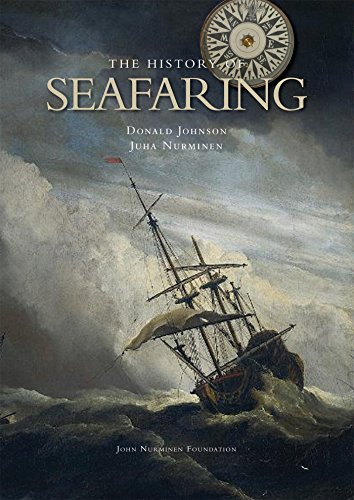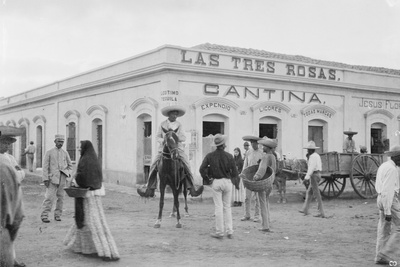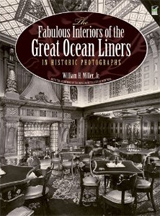Vessels at the Port of San Francisco: 1800s
November 3, 1865, Daily Alta California
FOR SAN BLAS
|
November 18, 1864, Daily Alta California
All Right, and Not a Pirate. The little screw steam-tug Zenith, Capt. Peters, which was stopped by the Shubrick, acting under the orders of Colonel James, Collector of the Port, as she was making her trial trip in the harbor, some weeks since, having been released and returned to her owners, will leave for San Blas, Mexico, to-day. She will run hereafter on the inland waters in the vicinity of San Blas, in an eminently peaceful capacity, not as a pirate, to prey on our commerce.
January 2, 1865, Sacramento Daily Union
Robert Haley arrested at San Francisco on suspicion of piratical intent; released by the Marshal.
January 7, 1865, Sacramento Daily Union
By Telegraph to the Union
The schooner Harriet Rowe had arrived at San Blas before the Sacramento came up, but the steam tug Zenith, belonging to Captain Peters, which was seized here on suspicion of piracy, had not been heard from and it was feared she was lost as the weather was exceedingly severe.
January 22, 1865, Daily Alta California
San Francisco, California
Shipping Intelligence
Foreign Ports: Mazatlan - Sailed January 12th, steamer Zenith, Simpton, San Blas.
January 23, 1865, Daily Alta California
San Francisco, California
The little propeller Zenith, of forty tons, built in San Francisco, for Captain Peters, is to be employed as a mail boat between San Blas and Mazatlan under Mexican colors. Captain Simpton, formerly Harbor Master of San Francisco, commands her. The Captain has changed his nationality also, and has become a subject of Maximilian. ~ X
June 25, 1865, Daily Alta California
TERRIBLE BUTCHERY AT SEA -- CREW AND PASSENGERS OF A VESSEL MURDERED.
On Saturday, 29th April, the Mexican Haydee, Captain Facundo Martinez, sailed from Mazatlan for La Paz, with the following passengers , as registered at the Captain of the Port's office: J. C.. G. Chinelly, the owner of the vessel; Quivino Bruno, Augustia Marcelo, Guadalupe and Francisca Castro, Marta Mendina, Angeles Barreto, Ramon de Chao, wife and three children, Rafael Velasco.
The Haydee had a crew of three or four men. In addition to the parties aobve enumerated, Charles Magne (a Frenchman), a Greek and a Italian, whose names we have not been able to learn, were also on board. Magne and the Greek and the Italian are the three who perpetrated the fiendish crime.
Some two weeks since, no tidings having been received concerning the Haydee, apprehensions for her safety were rife and after a few days longer delay . . . the steamer Zenith was sent to la Paz, but on reaching that port learned that the Haydee had not been there. The Captain of the Zenith then moved south, and on reaching Tomales, in the Bay of Banderas, found the vessel . . . Two young men, the cook and steward, were found with the Haydee, both of whom were brought to this city by the Zenith and lodged in jail . . . The Zenith arrived here on Wednesday last . . . enough has leaked to enable us to give an imperfect version of the affair.
While the Haydee was near La Paz, on the night of the 5th May, the work of assassination commenced. The man at the wheel was the first victim, and immediately after Mr. Chinelly, who was sleeping near by, was killed; the Captain was third among the slain. A lady on board, who was enceinte, was ripped open; the helpless little children had their brains knocked out, and in that dreadful condition thrown overboard. The passengers and crew were all murdered, with the exception of the cook and steward, who allege, and with much plausibility, that the assassins, not being able to work the vessel without help, made use of them as sailors, and that they were constantly watched and threatened with instant death if they hesitated to do as they were ordered . . . the assassins' next thought was to escape with their plunder by sailing South America; but perceiving the approach of a steamer near Tomales, they ran they Haydee upon the beach and made off in the direction of Guadalajara.
June 26, 1865, Sacramento Daily Union
. . .One of the passengers, Ramon de Chao, formerly a pawnbroker in this city, was supposed to have had some $18,000 in his possession, but it has been ascertained that he had only $2,000 or $3,000 with him. The hope of getting this money was no doubt the incentive to the commission of this wholesale butchery.
January 9, 1867, Sacramento Daily Union
. . .the steam tug Zenith, belonging to Captain Peters, had not been heard from and it was feared she was lost as the weather was exceedingly severe.
January 9, 1867, Sacramento Daily Union
The little steamer Zenith arrived here to-day under sail, after an almost miraculous voyage from Mazatlan. Her Captain, McFaddy (or McFarland), finding the French did not mean to let her away from Mazatlan on account of the sympathy shown by his party for the Liberals, who in turn refused to fire on them as the steamer floated past Corona's batteries on Holderness Island, slipped his cable and ran out of the roadstead on the night of November 1st, with only himself, Charles Harkinson, the engineer, and a Mexican boy on board, hoping to sail to Cape St. Lucas and there obtain provisions. Contrary winds drove them some 200 miles off the Cape and ultimately 700 miles to sea. They finally bore up for San Francisco, and when within four miles of the Heads, during the latter part of December, were caught in the storms and twice driven to sea, and nearly lost on the 24th of December. The Zenith ran into Bodega Bay, only the Captain being able to stand, all having been six days without a mouthful of food. They were out fifty-four days on short allowance. From there they came here to-day. The Zenith left this port to ply between Mazatlan and San Blas two years since. She is but fifty feet in length, sixteen feet beam, and three feet draft, and is owned by James Milburn, of this city.
January 9, 1867, Daily Alta California
San Francisco, California
A STRANGE STORY OF ADVENTURE AND WONDERFUL ESCAPE.
We heard a narrative of privation, daring and reckless adventure yesterday, which sounds more like a chapter out of the "Arabian Nights" or some similar work of improbable fiction, than the sober relation of factual events transpiring in our own time and at our own doors, as it were. The readers of the Alta will remember the story of the little steamer Zenith, a sloop rigged propeller of fifty feet in length, sixteen feet beam and three feet draft, owned by Jos. Milburn of this city, and which put to sea some two or three years since, and though but a mere cockle shell about as fit to buffet the waves of the Pacific as a ready made pine coffin made the trip to Mazatlan in safety.
|
The little craft plied for a time between Mazatlan and San Blas, and then was laid up at Mazatlan. The disturbed condition of the country rendering her running unprofitable. Some month since, her owner sent Captain McFarland, an old sailor, and Charles Harkinson, a Down East Yankee engineer, down to Mazatlan to bring the Zenith to this port by hook or by crook," they to have a certain sum in event of success.
At Mazatlan they put up with a Senora Sanchez, aunt to a Corona Secretary of that name, an enthusiastic Liberal family. Young Sanchez had been shot through the body and was staying in the house of his aunt, on parole to the French, receiving surgical treatment. McFarland and Harkinson did not hesitate to express their contempt for the demoralized vagabonds comprising the Imperial forces in Mazatlan and their hearty sympathy for the Liberals, who were holding the town in a state of siege, and and eventually, as our readers know, drove the invaders ignominiously from their shores. This fact was undoubtedly reported to Corona, who had batteries erected on Holderness Island, which was occasionally firing into the town, and mercilessly peppered every vessel which endeavored to pass up from the roadstead into the harbor in front of the city. However this may be, they got up sail on the Zenith one day during the month of October, and ran down past the Liberal batteries. On the previous day two schooners had ran past the island and were peppered by the Liberals until they appeared, in the language of Mr. Harkinson, to have the small-pox; but when the American steamer Zenith floated past with the tide, not a shot was fired. As they came opposite the batteries and within a few yards of the guns, Harkinson lost his self-possession so far as to jump on deck, wave his hat, and hurrah for the Liberals, which demonstration was answered by a cheer from Corona's men in the batteries.
This was the straw that broke the the camel's back. The Imperial Commandante witnessed the affair, and was in a fearful passion of course. The Zenith came to anchor in the roadstead near the English war steamer, and Capt. McFarland then asked permission to leave for San Francisco. This was refused by the French Commandante, except on condition that a bond of $2,000 should be filed by the Captain, with good sureties, against her being used in any manner in aid of the Liberals. The bond was executed, and wen the Commandante changed the conditions and demanded that $2,000 in gold should be deposited with him as security. This condition also would have been complied with, but the Commandante then raised his demand to $4,000, and Capt. McFarland, seeing that he was being trifled with, that would never be allowed to depart peacefully and openly, determined on a bold move.
Smuggling a few trifling articles of food on board, he slipped his cable, leaving his anchor in the roadstead, on the night of November 1st, and drifted out into the Gulf, with no one on board but himself, Harkinson, and a Mexican boy who knew nothing of the sea, and not enough fuel to keep up stream for an hour. As soon as they were out of the reach of the French, they made sail and steered for Cape St. Lucas, where they proposed to land, but baffling winds defeated their purpose and they drifted out some 150 to 200 miles beyond the Cape. Finding in impossible to reach the Cape, they determined to make sail for San Francisco and trust to falling in with some passing vessel from which they could obtain a supply of provisions. In this also they were unfortunate, and the little steamer, indifferently rigged for sailing, and short-handed at that, was carried, ultimately, 700 miles off shore, as near as could be ascertained by "dead reckoning," they having no chronometer or sextant on board.
At last they "got a start" and ran for San Francisco. Arriving off the Heads, other and still greater disappointments awaited them. When within four miles of the Golden Gate a head wind drove them out to se again, and when a second time within within sight of the wished for haven, the great storm which marked the closing of the year drove them away once more, and, in fact, nearly sent steamer and all on board to the bottom. Their slender stock of provisions were long since exhausted, and by the 18th of December, not a mouthful of anything eatable could be found on board. The undaunted Captain and his small but determined crew, however, will persevered, and at last, on the 24th of December, 51 days after they left Mazatlan, they put into Bodega.
Harkinson and the Mexican boy were unable to stand from exhaustion, all having been six days without a morsel of food, and the Captain was just able to steer the little craft into the harbor. They remained at Bodega (right), kindly cared for a recruiting their strength until Sunday, when they ran down the Coast, came into the long sought for Golden Gate, and anchored over at Saucelito.
Yesterday morning the Zenith came around to the foot of Third street, where she is now lying in the rear of the works of the San Francisco Fuel Company. The party heard the news of the late Liberal successes in Mexico with hearty satisfaction, and spoke of Gen. Corona in terms of the highest praise, while their opinion of the French invaders of Mexico and their traitor allies need not be inquired for the second time. Such a trip is seldom taken by anybody a second time, and escape of the party from death by starvation or the sea may be welcomed an almost a miracle. as part of the cargo.
The Sea Chart
The Illustrated History of Nautical Maps and Navigational Charts

The sea chart was one of the key tools by which ships of trade, transport and conquest navigated their course across the oceans. John Blake looks at the history and development of the chart and the related nautical map, in both scientific and aesthetic terms, as a means of safe and accurate seaborne navigation.
This work contains 150 color illustrations including the earliest charts of the Mediterranean made by thirteenth-century Italian merchant adventurers, as well as eighteenth-century charts that became strategic naval and commercial requirements and led to Cook's voyages in the Pacific, the search for the Northwest Passage, and races to the Arctic and Antarctic.
Shanghaiing Days
The Thrilling Account of 19th Century Hell-Ships, Bucko Mates and Masters, and Dangerous Ports-Of-Call from San Francisco
Richard H. Dillon
An Amazon Editors' Favorite: In the last quarter of the nineteenth century, the American Merchant Marine went into a tragic decline, and sailors were forced to serve under conditions that were little better than serfdom. Seamen were exploited in wholesale fashion, disfranchised of almost all their civil and human rights, and brutally punished for even minor offenses. Successful skippers had turned into slave drivers, cracking down on the sailors, sometimes even murdering their "hands." Though captains were legally prohibited from flogging their crews, they did not hesitate to wield belaying pins, marlin spikes, or their bare fists. The seamen's lot became so horrible in this period that entire crews frequently jumped ship when a vessel came into port. One result of this was that new crews had to be kidnaped, crimped, or shanghaied from the unsuspecting populace of the ports. These "impressed" or "hobo" crews were still further conspired against. They often had their wages stolen from them; they were poorly fed and clothed. Their lives became "hell afloat and purgatory ashore." In this way what had been our "first and finest employ" in colonial days was turned into a disreputable profession-one that was classed with criminals and prostitutes.
Atlantic:
Great Sea Battles, Heroic Discoveries, Titanic Storms, and a Vast Ocean of a Million Stories
Simon Winchester
"Variably genial, cautionary, lyrical, admonitory, terrifying, horrifying and inspiring. A lifetime of thought, travel, reading, imagination and memory inform this affecting account." —Kirkus Reviews
Blending history and anecdote, geography and reminiscence, science and exposition, the New York Times bestselling author tells the breathtaking saga of the Atlantic Ocean, setting it against the backdrop of mankind's intellectual evolution. Until a thousand years ago, no humans ventured into the Atlantic or imagined traversing its vast infinity. But once the first daring mariners successfully navigated to far shores — whether it was the Vikings, the Irish, the Chinese, Christopher Columbus in the north, or the Portuguese and the Spanish in the south — the Atlantic evolved in the world's growing consciousness as an enclosed body of water bounded by the Americas to the West, and by Europe and Africa to the East. Atlantic is a biography of this immense space, of a sea which has defined and determined so much about the lives of the millions who live beside or near its tens of thousands of miles of coast.

Fourth Edition
John Rousmaniere
Since the publication of the first edition in 1983, The Annapolis Book of Seamanship has set the standard by which other books on sailing are measured. Used throughout America as a textbook in sailing schools and Power Squadrons, this book covers the fundamental and advanced skills of modern sailing. This edition of Annapolis is a major overhaul. Over half the book has been revised; old topics and features have been updated, and many new ones have been introduced, with the design modernized, and additional color illustrations.
Seized
A Sea Captain's Adventures Battling Scoundrels and Pirates While Recovering Stolen Ships in the World's Most Troubled Waters
Max Hardberger
Seized takes readers behind the scenes of the multibillion dollar maritime industry, as Hardberger recounts his efforts to retrieve freighters and other vessels from New Orleans to the Caribbean, from East Germany to Vladivostak, Russia, and from Greece to Guatemala. He resorts to everything from disco dancing to women of the night to distract the shipyard guards, from bribes to voodoo doctors to divert attention and buy the time he needs to sail a ship out of a foreign port without clearance. Seized is adventure nonfiction at its best.
The Rebel Raiders
The Astonishing History of the Confederacy's Secret Navy
James T. deKay
During its construction in Liverpool, the ship was known as “Number 290.”

Commodore Levy:
A Novel of Early America in the Age of Sail
(Modern Jewish History)
By all accounts, Uriah Phillips Levy, the first Jewish commodore in the U.S. Navy, was both a principled and pugnacious man. On his way to becoming a flag officer, he was subjected to six courts-martial and engaged in a duel, all in response to antisemitic taunts and harassment from his fellow officers. Yet he never lost his love of country or desire to serve in its navy. When the navy tried to boot him out, he took his case to the highest court and won. This richly detailed historical novel closely follows the actual events of Levy’s life: running away from his Philadelphia home to serve as a cabin boy at age ten; his service during the War of 1812 aboard the Argus and internment at the notorious British prison at Dartmoor; his campaign for the abolition of flogging in the Navy; and his purchase and restoration of Monticello as a tribute to his personal hero, Thomas Jefferson. Set against a broad panorama of U.S. history, Commodore Levy describes the American Jewish community from 1790 to 1860, the beginnings of the U.S. Navy, and the great nautical traditions of the Age of Sail before its surrender to the age of steam.


Navigating the World's Oceans
Donald Johnson and Juha Nurminen
Royal prestige, intellectual curiosity, and territorial expansion all propelled mankind to undertake perilous voyages across unpredictable oceans. This large and lavishly illustrated volume brings that history to life. From the early Phoenician navigation techniques to the technologies behind today's mega-ships, the greatest advances in shipbuilding are covered, accompanied by hundreds of images, with an in-depth look at navigational instruments (including those used by the Vikings).















 Copyright ~ 1998-2018.
Copyright ~ 1998-2018. 